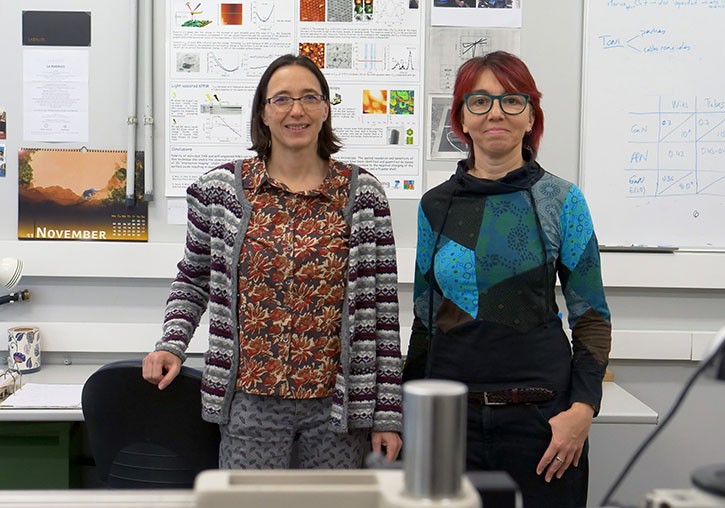Scientists of the Universitat pave the way for the development of high-efficiency ultraviolet light sources
- Science Park
- November 29th, 2019

A research team from the Institute of Material Science of the Universitat de València (ICMUV) has overcome the obstacles that limited the efficiency of short-wave mercury-free LED light sources, fundamental on tasks such as disinfection and water purification. It is a system based on nano-wires and materials improved with indium and magnesium. This work is published on the journal Nano Letters.
The development of efficient light sources in the far ultraviolet region (UV-C, short wavelength invisible to the human eye) is essential to facilitate disinfection tasks, such as water purification or sterilisation of medical instruments, among others. Today, these light sources are based on mercury lamps, an environmental pollutant that needs to be reduced.
In parallel to the studies for the development of blue LED, which has allowed to obtain efficient and low cost white light (Nobel Prize in Physics 2014), the scientific community pursues obtaining UV-C light sources based on LED technology, which have the advantage of being mercury-free, as well as being smaller, more versatile and efficient.
However, achieving an LED that emits with a shorter and shorter wavelength had, until now, two major obstacles: on the one hand, the poor quality of the materials obtained when trying to integrate with silicon technology; and on the other, the difficulty of incorporating impurities into the material in sufficiently high concentration to improve its properties and achieve the proper functioning of the devices.
A research team formed by the POEMAS group (Propiedades Optoelectrónicas de Materiales Avanzados y Superficies) (Optoelectronic Properties of Advanced Materials and Surfaces) of the ICMUV-Universitat de València, in collaboration with the University of Grenoble (France), have just given solutions to both problems, as reflected in the article Mg and In Codoped p-type AIN Nanowires for pn Junction Realization, recently published in the journal Nano Letters.
The work shows a material, practically free of defects, in the form of nano-wires that grow on a silicon floor, and manages to modify its properties due to the introduction into the material of magnesium and indium atoms. “To change the properties of a material it is necessary to incorporate what in semiconductor science we call 'impurities', and in this case we needed to introduce magnesium in larger quantities than the material accepted”, explains Ana Cros, scientist in charge of the POEMAS group. “We have finally archived to multiply the impurities by ten by introducing indium atoms, which favours the magnesium incorporation in the material”, she highlights.
The result opens a new path for the development of high-efficiency LEDs in the far ultraviolet, for the development of disinfection devices free of mercury, more compact, cheaper and more versatile. This research is part of the EFIMAT project (Materiales Avanzados para la Eficiencia Energética) (Advanced Materials for Energy Efficiency), funded by the Generalitat Valenciana (Valencian Government) (PROMETEO2018/123).
Reference:
Mg and In Codoped p-type AlN Nanowires for pn Junction Realization
Alexandra-Madalina Siladie, Gwénolé Jacopin, Ana Cros, Nuria Garro, Eric Robin, Damien Caliste, Pascal Pochet, Fabrice Donatini, Julien Pernot, and Bruno Daudin
Nano LettersArticle ASAP
DOI: 10.1021/acs.nanolett.9b01394
More information:
File in: Ciencias Tecnológicas , Química
















